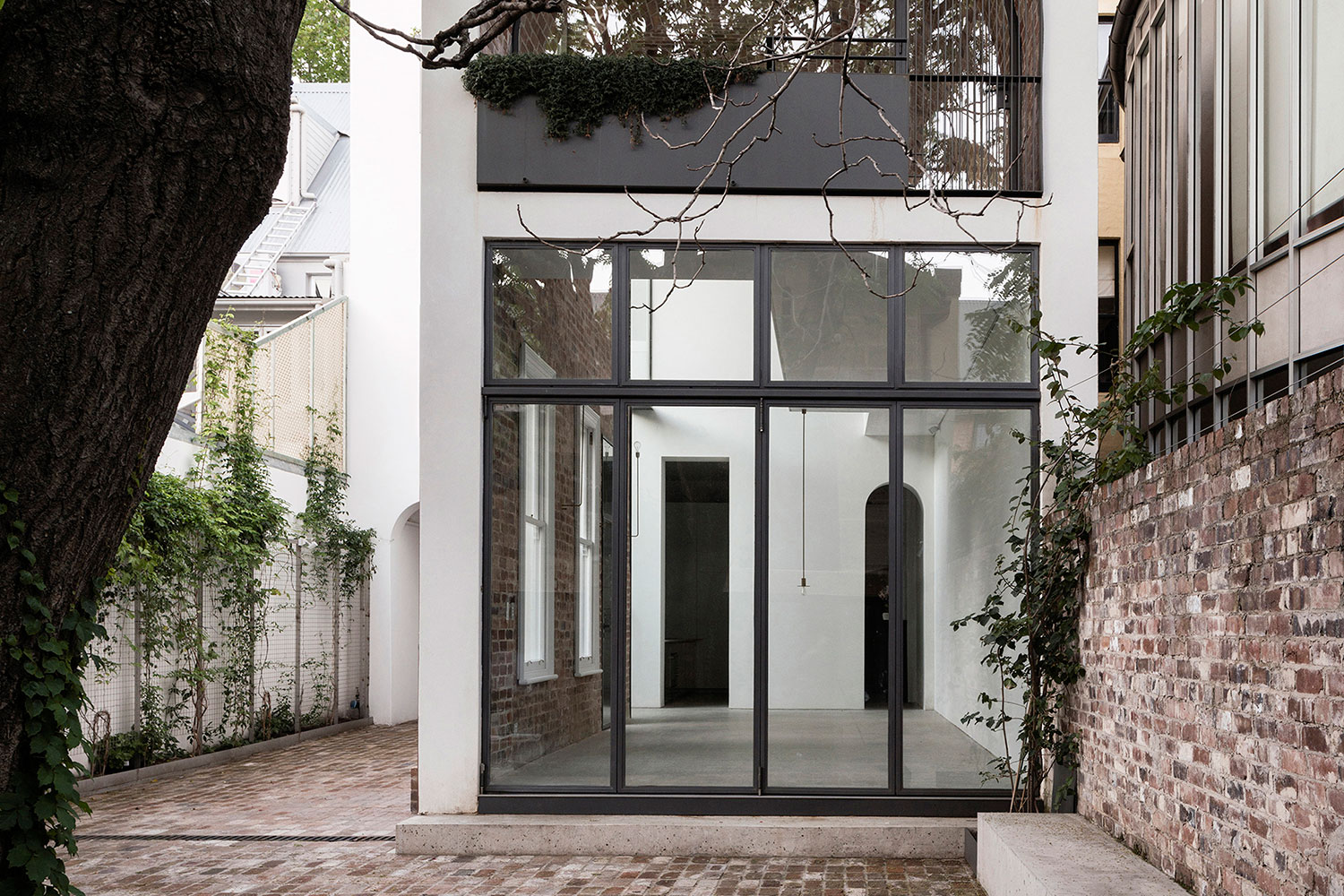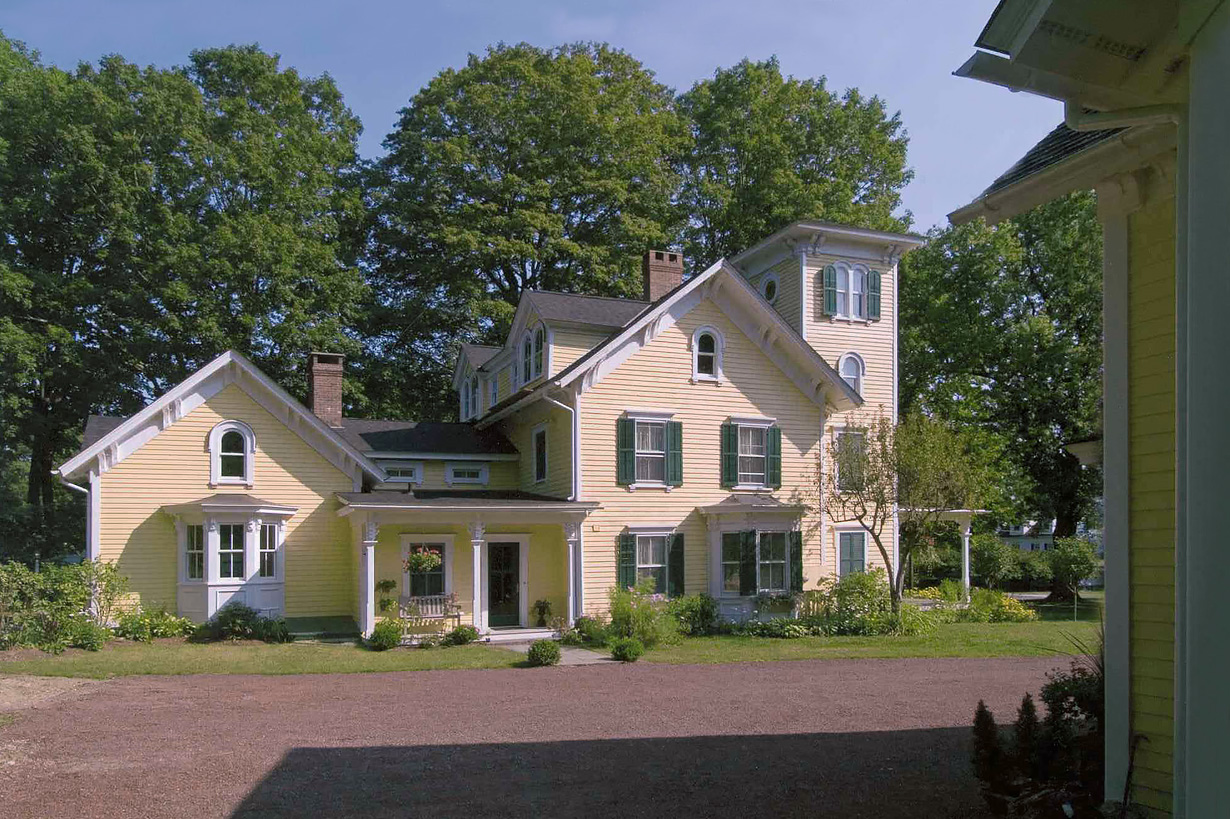Table Of Content

Italianate architecture is a style that originated in Italy in the 16th century and was popularized in the United States in the mid-19th century. Italianate architecture is known for its symmetry, low-pitched roofs, ornate decorative details, round-arched windows, and classical influences. A daring departure from the cold and formal architecture of earlier decades, Italianate style brought a passion for freedom to 19th-century building design. Architects took inspiration from Mediterranean farmhouses with their characteristic towers and informal details, embracing this new approach and injecting it with an all-American flair to form something unique by the 1930s. By doing so, they could better express themselves artistically, allowing their full creativity to reign as they designed buildings never seen before.
Roofs

The owners ultimately decided to tear down the structure to make way for a new one, an Italianate mansion that was already halfway through construction when AD100 alum Madeline Stuart came on board, after a previous designer had been cut loose. The ornamentation and other decorative details were made using cast iron and wood. The ground floor sits on a raised area, as is evident by the porch position. Most Italianate stand-alone houses had a box with a centered gable, L or U plan, an L plan with a tower, a box with a hip roof, and a front gable. The porches featured beveled or chamfered corners, both for safety and aesthetic purposes.
About This 1800’s Historic House For Sale In Johnson City Tennessee
Soon enough, however, a new national craze arose, and the Queen Anne and other High Victorian styles swept the Italianate permanently aside. The William M. Marsh House in Sycamore, Illinois, built in 1873, is a textbook example of Italianate architecture, with details such as the porch, narrow windows, wide eaves, and a belvedere. The growing popularity of pattern books in the 1840s created a consistent architectural template that spread across the country, primarily to the East Coast and Western states. Perhaps the most distinguishing features for Italianate style are the ornamental architectural details, including cornices, brackets, corbels, arches, and quoins.
History of Italianate Architecture
Live la dolce vita in Devon with an Italianate mansion ready for a fresh lease of life - Tatler
Live la dolce vita in Devon with an Italianate mansion ready for a fresh lease of life.
Posted: Tue, 22 Aug 2023 07:00:00 GMT [source]
Italianate style spread from England throughout Northern Europe, the British Empire, and to the United States where it became a popular style in America during the 1860s after the Civil War. The style spread across the U.S. in large part thanks to popular pattern books that were written by champions of Italianate style such as "The Architecture of Country Houses" by New York landscape designer Andrew Jackson Downing. Italianate architecture is a popular 19th-century style of building that was inspired by 16th-century Italian Renaissance architecture combined with Picturesque influences from the farmhouses of the Tuscan countryside.
For example, from the late 1840s to 1890, it achieved huge popularity in the United States,[5] where it was promoted by the architect Alexander Jackson Davis. The home offers 4 bedrooms, 3 bathrooms, 3 living spaces and several additional rooms with a total of over 3,100 finished square feet and a 2-car attached garage. The main level features a living room, family room, dining room, office, kitchen, laundry room, a full bathroom and access to the 2-car garage. This new Italianate villa in Southern California is an homage to the homeowner’s memories of Italy and the Mediterranean vernacular found in old Los Angeles. The house provides a rich alternation of outdoor and indoor rooms to take advantage of the climate and to capture views of the gardens and grounds, including the existing large trees. From the entry gate the progression includes the motorcourt, open-air courtyard, double height living room, arcaded loggia, and continues across the grounds to the pool pavilion at the rear of the property.
Why Builders Loved the Italianate Style
These styles represented 19th-century America’s interpretation of the classical vocabulary, already filtered through England and, earlier, the Renaissance. It became a vernacular style, easily adapted to different materials and budgets. From 1840 to 1885, Italianate style was the most popular design in the American architectural scene. When it surged in the U.S. in the 1840s – mostly through the work of landscape architect Andrew Jackson Downing – it was transformed by architects into something truly American.

One approach to decorating will apply to a mansion, where money and skilled labor were available and the architect may have chosen Rococo Revival pieces from established cabinetmakers. Another approach makes sense for a Midwestern builder’s house of the 1880s, most likely furnished with production Renaissance Revival and cottage furniture. Instead of the mansion’s florid cast-plaster brackets and cartouches, the more vernacular house had just ceiling medallions; the rich man’s trompe l’oeil frescoes were recast, in the vernacular example, as papered or painted panels on plaster walls. Upjohn would later design another house in the Italianate style – Kenworthy Hall. The plantation house in Alabama is the Southern counterpart of the Edward King House.
John Notman
Many sources credit British architect John Nash for creating the first Italianate structure in Cronkhill in 1802, though the architectural style fully developed in later decades. If you’re fascinated by the decorative brackets and details on the front porch, the lovely bay windows, and the tall rounded ones, and other fanciful accents, remember that the Italianate style offers tremendous design flexibility and adaptability. In addition to Cincinnati, Covington, Kentucky; the Garden District of New Orleans; and parts of California feature Italianate architecture. In San Francisco, the Painted Ladies, row houses in the Queen Anne style, are celebrated examples of the time period that saw the rise of Italianate style, and they display aspects of the romantic, whimsical architecture.
Because it was more informal, architects had artistic freedom to apply its concepts not only to sprawling manor homes but also to urban townhouses, modest homes, and public structures. The Edward King house was one of the earliest representations of Italianate architecture. With a monumental 3-story brick construction, this house is nothing short of grand. Additionally, the arched windows and entryways, cupolas, and deep overhanging eaves grace the building. Furthermore, the flexible interior spaces enhance the overall style of the house.
A 154-year-old Italianate mansion that had been facing the wrecking ball will be acquired, moved and sold as a family ... - MLive.com
A 154-year-old Italianate mansion that had been facing the wrecking ball will be acquired, moved and sold as a family ....
Posted: Wed, 28 Jun 2023 19:44:13 GMT [source]
Additionally, they have one or two panes depending on the design a homeowner wanted. The segmentally arched windows became common as the style grew popular, and most houses had them. The industrial revolution brought success and wealth to many people in America. Newly wealthy people could now afford houses built with Italianate architecture since they were the most common at the time. All the features of the houses suggested a romantic vision of Italian villas of Renaissance Italy. Of the many Victorian-era variants represented in Washington, D.C.’s historic neighborhoods, Italianate architecture is one of the most passionate — a feast for the eyes.
This Italianate building has a hipped roof that extends past the buildings sides, with wooden decorated brackets. The windows are long and narrow and are outlined on all sides with thick moldings. Italianate houses are relatively easy to identify, but there is no particular “Italianate style” for interiors, because the style spanned half a century. The (French) Rococo was in vogue in the 1850s and 1860s for houses in the Italian style, and Renaissance Revival interiors held sway after 1870. These Romantic-era styles both were advocated in Downing’s influential pattern books of the 1840s.
This home is a must see to appreciate all the work and details that have gone into the restoration. The underlying key design objective of the project was to understand the sense and feeling of the place, its history and the cultural value of the original architecture. We carefully considered and reinterpreted in a contemporary language, the essential and historical character of the site in order to celebrate, to uphold and revive its history. We wanted to avoid tendencies for preconceived ideas and solutions which in turn is formulaic in design approach and keep the new design elements simple, so that they avoided complications, resulting in generating pure interiors. The Presidio Sutler’s Building (Building 116) was built in 1885 as both a store and residence for the post’s sutler, the man who sold goods and supplies to the soldiers.
It is a large house with 20 rooms that still maintain their original style, and the quoins are well visible on the structure. The double entry door, sloped roof, and an iron crested tower highlight this Italianate style. The Lewis house was a private home owned by Caroline and Cornwall Noxon.
These books were inspiration for those looking to build a home, as well as something of a design template for builders. Downing was one of the country’s early landscape architects, an emerging profession at the time, and intentional landscaping was likely part of Italianate’s appeal. Following the completion of Osborne House in 1851, the style became a popular choice of design for the small mansions built by the new and wealthy industrialists of the era. These were mostly built in cities surrounded by large but not extensive gardens, often laid out in a terrace Tuscan style as well. On occasions very similar, if not identical, designs to these Italianate villas would be topped by mansard roofs, and then termed chateauesque. The style was later used by Humphrey Abberley and Joseph Rowell, who designed a large number of houses, with the new railway station as the focal point, for Lord Courtenay, who saw the potential of the railway age.
Creative ostentation, a joyous use of polychromy, and sinuous curves are always in order. • Athenaeum of Philadelphia, built in 1845 and the first Italianate building in his adopted city. The use of shipping containers for building homes and other structures is gaining in prevalence in our era, owing to ... Wentworth stands out from its competitors regarding remodeling services in the Washington, DC, metro area.
The larger of these is divided from the principal block by the belvedere tower. The smaller, the ballroom block, is entered through a columned porte-cochère designed as a single storey prostyle portico. A variety of ornament was incorporated throughout the house including pediments and friezes, mosaics inspired by ancient designs, and decorative ceilings which vary the experience of moving through the house. While the civilian Italianate buildings in San Francisco were often wildly colorful and ornately decorated, the army’s version of Italianate represented a more restrained and paired-down style. In both cases at the park - the Fort Mason Officers’ Club and the Presidio Sutler’s Building- the buildings were unique and not constructed from the standard army quartermaster plans. These two buildings were also originally constructed as residences and were both located in a highly visible part of their post.













